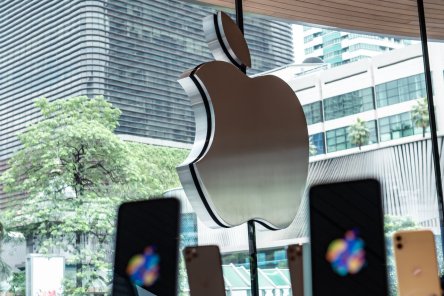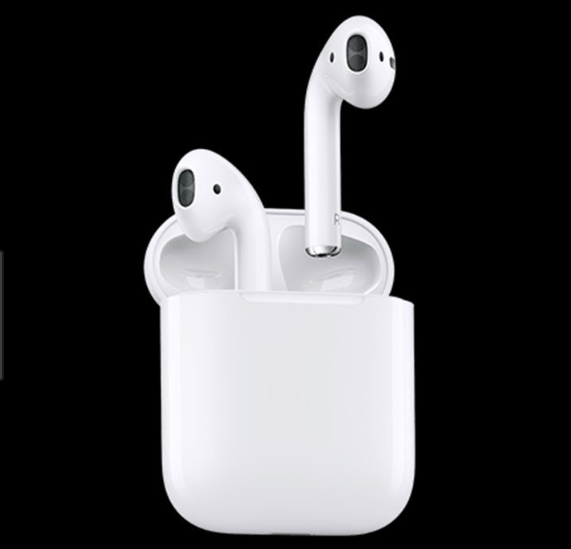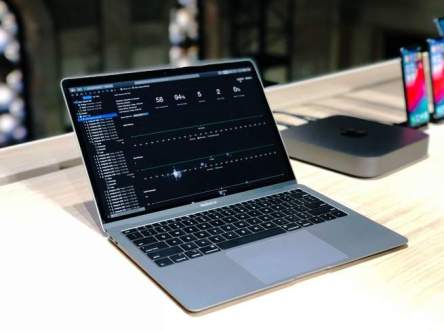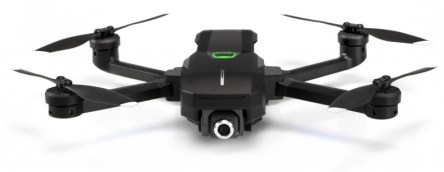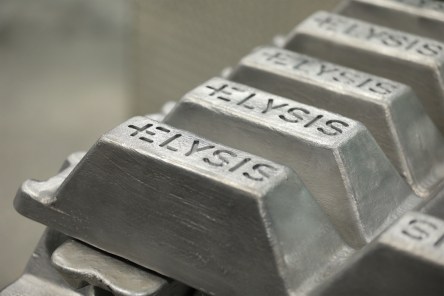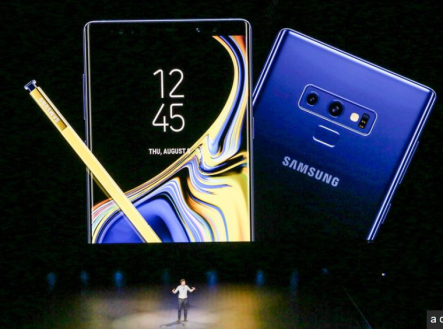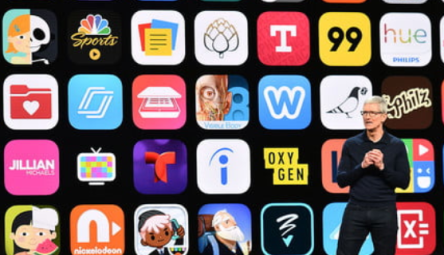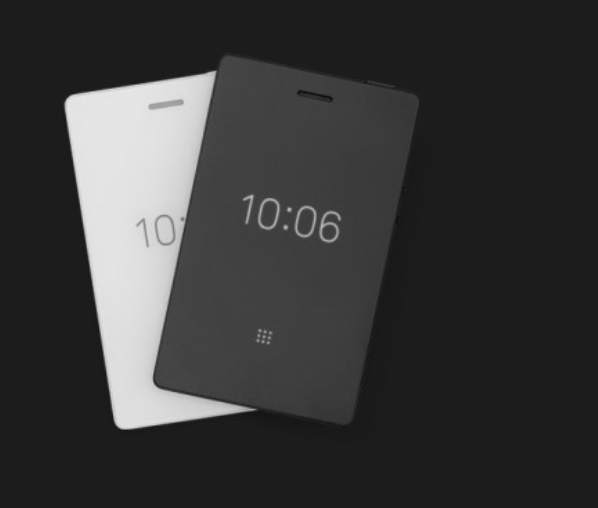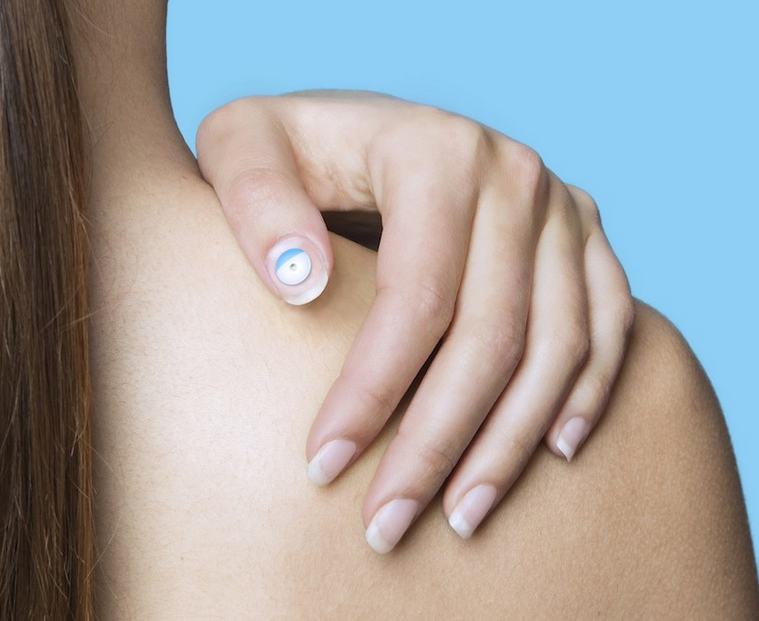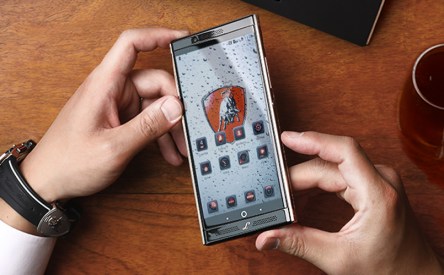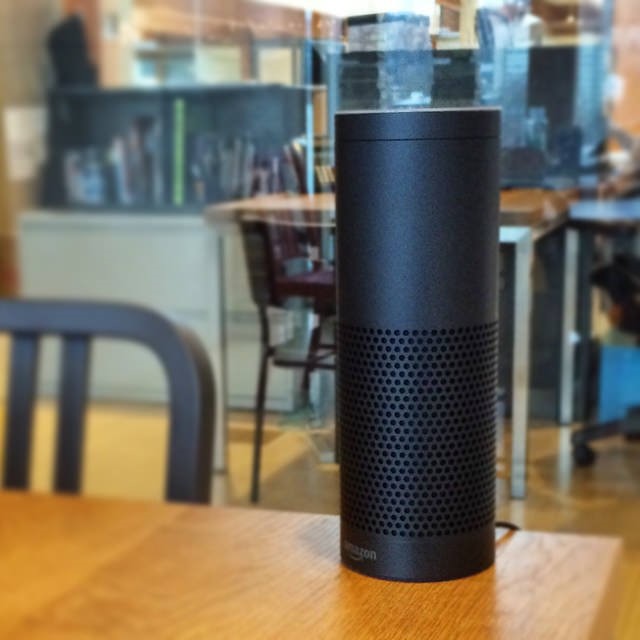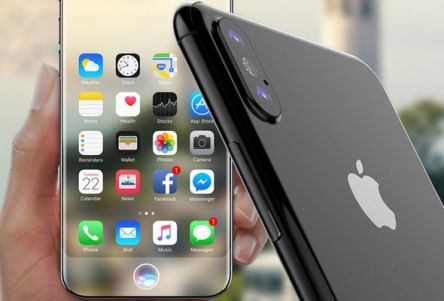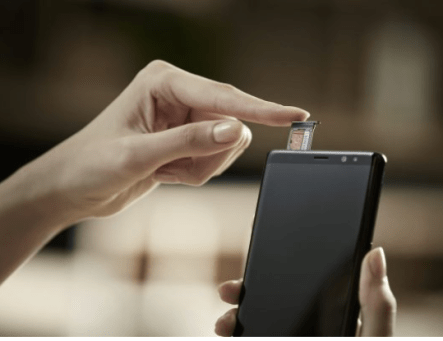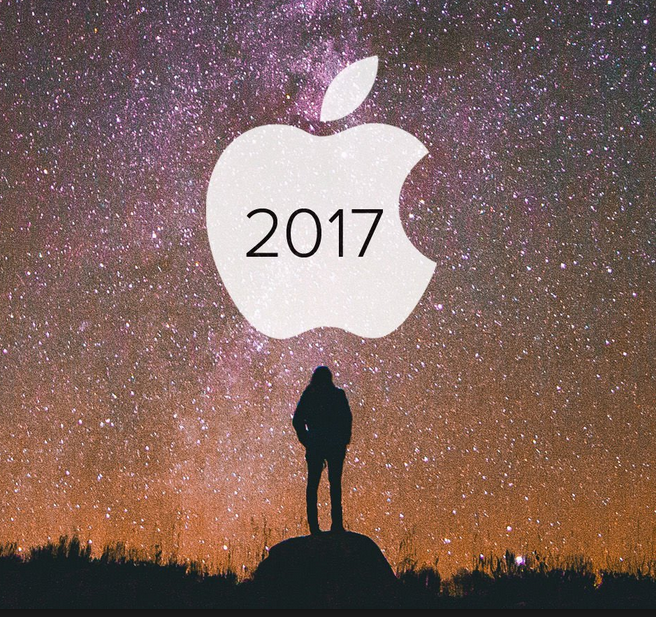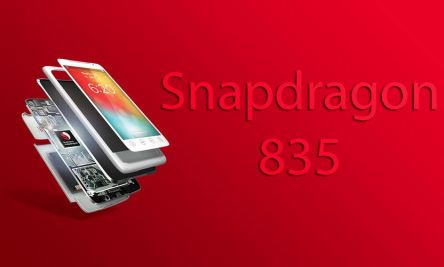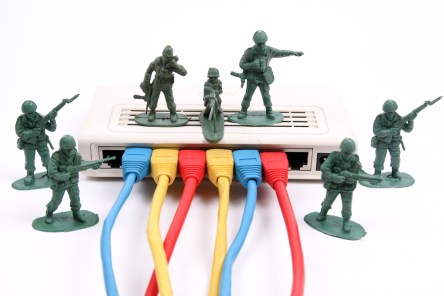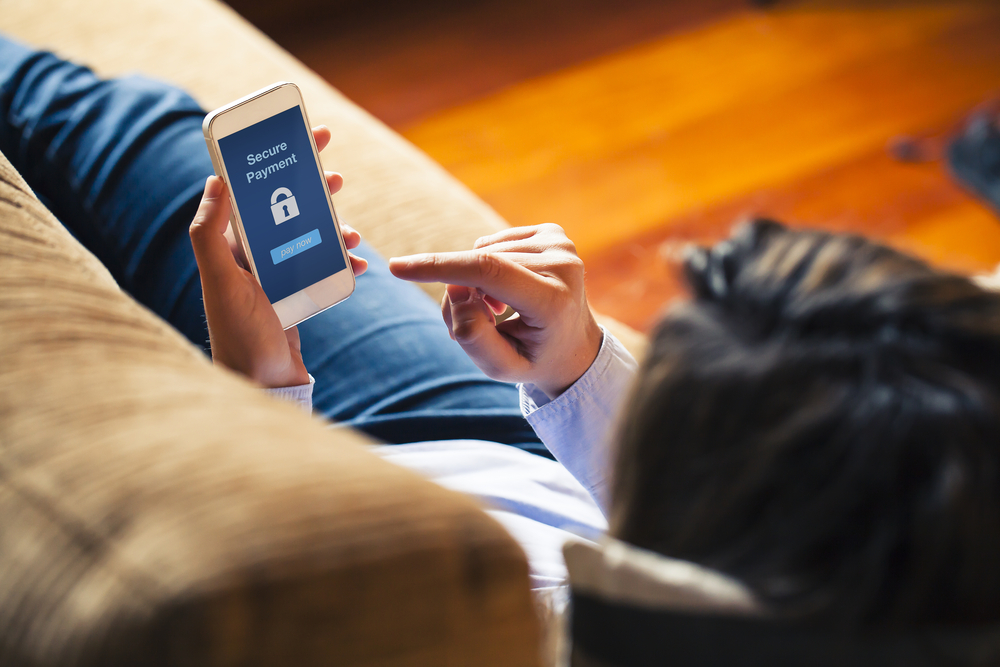As holiday shopping steps up, you might interact with barcodes – those squares or rectangles with vertical black lines interspersed with white space and numbers that are attached to your purchased items – more than usual. Ever wonder where they came from and what they do? Virtually all types of businesses use barcodes to track products, prices and inventory. Computers linked to scanners read the codes and use a unique combination of bars, spaces and numbers to retrieve data about the product. “Barcodes play a crucial role in the effective and efficient operation of our economy, from small businesses to large multinational conglomerates,” says Wasp Barcode Technologies, a Plano, Texas-based provider of inventory management and asset tracking systems. “They paved the way for the globally connected distribution channels we now have.” Innovation from lines in the sand Barcodes trace their origin to 1949, when Joseph Woodland, a mechanical engineer at Drexel University, drew a set of parallel lines, or bars, in beach sand as he sought to apply a variation of Morse code to automate the grocery checkout process. Woodland and his colleague Bernard Silver subsequently filed a patent application for “Classifying Apparatus and Method,” the first barcode concept, which was granted three years later. Scanning technology capable of reading the symbols and converting them into information such as an item’s origin, price and location didn’t come until the 1970s. That’s when basic guidelines for barcode development and an effective coding system, plus a standardized 11-digit code to identify products, were developed. On June 26, 1974, the first barcode, on a pack of chewing gum, was scanned at a supermarket in Troy, Ohio. 1D and 2D types The pattern of the most popular type of barcode, the linear or “1D,” is formed by the...
Still Beeping
The Enduring Pager
Some technologies lapse into obscurity when something more capable or easier to use comes along. Consider rotary telephones, floppy disks and VHS tapes. How about pagers, which came into service six decades ago? Those small electronic devices, sometimes called beepers because of the sound they make when notifying users of a new message, haven’t disappeared. Although totaling less than 4% of the number in use at their peak popularity 30 years ago, pagers today constitute crucial infrastructure for many professionals, include health care providers and emergency responders, who require quick and secure communication functionality. Pagers, which run on batteries, were patented in 1949 and originally designed for doctors. Motorola coined the word 10 years later and introduced the first consumer tone-only pager in 1964. Expanding functionality and status Radio frequencies managed by a network operator transmit signals that cause a pager to buzz, beep or vibrate, alerting the user to an incoming message. The message can comprise numbers, letters or both. Early models evolved to incorporate graphical displays, audio messaging, encryption, two-way functionality, wide-area paging capability and other enhanced features. In the 1980s and 1990s, says U.S. News & World Report, tens of millions of pager users considered their devices “status symbols — belt-clipped signals that a wearer was important enough to be, in effect, on call at a moment’s notice.” Multiple advantages Today, pagers suit health care providers, workers in remote locations, emergency responders and others because they use their own communications channels rather than mobile networks or Wi-Fi. They are highly reliable in areas with poor or disrupted cell service, resist hacking, function in hazardous locations such as blazing structures and boast a durable design. They are easy to use and install with little training. Even restaurants use them to notify patrons...
iPad Update
Spring 2024 Edition
Apple gadgets and products have improved significantly since their launch. Now, they are more portable and powerful than ever. Let’s explore the latest Apple iPads, Magic Keyboard and Apple Pencil upgrades. The iPad’s versatility defines it. The new iPad allows users, from consumers to pros, to take their creations to new heights. It brings lessons and learning to life for teachers and students alike, as well as gaming and entertainment. Light as a feather, the newest iPad Air offers engaging content, gaming, high resolution and Apple silicon, making it versatile for so many. It is available in 11-inch and an all-new 13-inch since many prefer a significant 30% more screen real estate. The 13-inch allows for more participants on Zoom calls. The new camera has a front-facing camera in landscape view, making it perfect for taking notes on the magic keyboard or FaceTime calls. The sound quality of the iPad Air is immaculate, with double the bass. iPad Air includes an Apple silicon M2 powerful chip with a faster GPU, CPU and Neural engine, 50% faster than M1 and better memory with powerful AI and learning features. These improvements in performance and capabilities ensure that the iPad Air is a reliable and powerful tool for any task. iPad Air comes in two new colors, blue and purple, along with space gray and starlight and is designed with 100 percent recycled aluminum in the enclosure. iPad Air also works with the new Apple Pencil Pro to add more capabilities and bring ideas to life like never before. The starting price for the iPad Air is $599. Crush the limits with iPad Pro. The iPad Pro is now so thin and so powerful, with a breakthrough display and amazing pro apps. Available in 11inch, 5.3mm and...
Apple Updates
New & Noteworthy 2023
Apple revealed its latest update last week and got us excited! Let’s explore the latest update and its standout features with a complete overview of some new enhancements. Apple is improving lives in significant and artful ways. The Apple Watch motivates you to get moving, informs you of healthy heart rates and can even alert you when you have gotten into an accident or emergency has been detected. The next-gen Apple Watch, Series 9, is silicon with new features. The silicon now unlocks innovative features like advanced workout metrics, sleep stages and car crash detections. S9 SiP boosts performance and capabilities, making it the most potent watch chip. The s9 CPU has 5.6 billion transistors, 60 percent more than series 8, and its GPU is 30 percent faster. It also has a 40core Neural Engine that can process machine learning tasks up to twice as fast. This all makes the watch have 18-hour battery power. Siri will be improved on the device and won’t have Wi-Fi or cellular data interruptions. One standout feature is the Double Tap feature. Double-tap your index finger to your thumb when you cannot tap the watch. Play and pause music while carrying groceries, answer a call while paddleboarding, or reply to a message while walking the dog with a simple double tap! Apple is making environmental differences by being carbon neutral. By 2030, Apple plans to be carbon neutral across its entire business and reduce greenhouse gas emissions. Office electricity is all solar powered, and all Apple manufacturing will be clean electricity by the end of the year. Packaging will be fiber-based and low-carbon mission transportation like ocean ships. The iPhone 15 now has HDR 1600 nits and peak brightness. It comes in 6.1- and 6.7-inch sizes. It has...
Senior Tech at CES
Cutting-Edge Caregiving
Early January is a special time of the year for the technology-inclined. Tens of thousands flock to Las Vegas for four days to feast their eyes on the latest inventions and innovations at CES. There were over 4,500 exhibitors clamoring for attention this year. But hidden among them were a surprisingly large number of vendors who’ve turned their attention to one of the biggest changes of the coming decade – our aging population. The vast majority of seniors prefer to age in place, staying in their homes as long as possible. But just as many underestimate how much support they will need as they grow older. Currently, only one-third believe they will eventually need long-term care services, but the actual rate is near 70%. To add another misconception to the pile, many seniors believe that Medicare will cover them in these cases. But Medicare, as it exists now, provides for skilled medical care — think hospital stays and rehab. Though there have been some motions in the Medicare Advantage space to accommodate long-term services and supports, many of tomorrow’s seniors are likely to be underprepared for the costs of growing older. Which is why we’re thrilled that more and more technology developers are focusing on senior living and creating unique ways to help. Here are five of our favorites from CES 2020 for upcoming technology with the potential to change the way we age. A robot ball that recognizes falls If you’ve watched any of the new Stars Wars films, you can see where the inspiration for Samsung’s new creation might have come from. Called Ballie, this palm-sized rolling robot can follow its owner around the home, communicating with other smart devices, interacting with household pets and — most useful for caregivers — keeping...
Sony vs. Apple
The Earbud Battle
With open office spaces becoming more popular, focus and quiet can be problematic. Headphones or earbuds are increasingly in use at the workplace. Picking the right pair of wireless headphones is not an easy choice when there are so many options to choose from. Some say Sony’s WF-1000XM3 will be Apple’s top rival when they are launched in August. But before we compare the two pairs, we need to talk a bit about Apple’s original Airpods and the updated version, the Airpods 2, that was recently released. Apple Airpods 2 Everyone was anticipating Apple to release the Airpods 2, a new version of the Airpods that would be waterproof and noise-cancelling. But in reality, Apple’s new Airpods are an improved version of the originals. Updates include an upgraded H1 chip and wireless charging. The new chip means you can use a $40 Qi-compatible charging mat to power the case rather than using a cable. The company said that H1 chip improves pairing connectivity and battery life. It also allows for a new “Hey Siri” voice activation feature which allows users to control volume and swap songs through voice commands. Airpods 2 are advertised to provide users with 50 percent more hands-free talk time, according to Apple. When exactly will the company release its newest version of the earbuds? Rumor has it they will land at the end of the year, or early in 2020. Sony WF-1000XM3 Sony’s new earbuds features an updated HD Noise Cancelling Processor QN1e, which cancels out ambient sound. Pretty useful when you’re in the subway and don’t want to be disturbed. The newest Sony earbuds also offer two microphones on each earbud that improve noise-canceling and also enhances voice quality on phone calls. WF-1000XM3’s case is slightly bigger than the...
Mobile World Congress 2019
Foldable phones star
Barcelona was again the epicenter of mobile tech last week when some 100,000 visitors attended the 2019 Mobile World Congress at the Fira Barcelona exhibition center. Foldable phones and 5G capability grabbed the spotlight, flanked by new multimedia applications and car updates. 5G foldable phones Two major smartphone brands presented headline devices: Huawei and Samsung. The Chinese manufacturer showcased the Huawei Mate X, a 6.6-inch device when used as a phone that expands in to an 8-inch tablet-like device. Despite its popularity, it comes with a sky-high price and will retail for $2,600 when it launches later this year. Mate X feeds off the company’s Kirin 980 processor and is 5G-compatible thanks to its multi-mode modem Balong 5000, marketed as the first chipset that supports Vehicle to Everything communications, providing low-latency and highly reliable solutions for connected vehicles. Additionally, the Mate X has backwards compatibility with 4G and 3G networks. The internal storage provides 512GB, expandable by up to 256GB through the card slot. Mate X is equipped with a massive 4,500mAh battery, which will get the phone charged up to 85 percent in just 30 minutes. Considering that 5G will consume more power than 4G, the boost in power will be more important than an upgrade. The device will include a three-camera array for the rear camera with 40, 16 and 8 megapixels, and one for the front camera. The foldable display is made of plastic, which brings some novelty to photographers. The setup means subjects will get a live preview of photos as they are being taken. A potential issue is the fact that Mate X wears its large screen on the exterior of the device, unprotected. Even though Huawei claims the hinge and the screen are durable, and that a special protector will keep scratches off the screen, skeptics will need convincing. Samsung’s Galaxy Fold is wrapped in mystery (and kept inside a glass case). The $2,000 device was introduced in London during the company’s Unpacked event, where nobody was allowed to touch it. Tech fans hoped that the MWC environment will enable them to get closer to it and maybe get their hands on the shiny device. But Samsung’s protectiveness remained the same, which led critics to project that perhaps Samsung rushed the launch of this revolutionary concept. Samsung’s foldable smartphone has a 4.6-inch HD+ Super AMOLED display which turns it into a 7.3-inch tablet. It is powered by a 4,380mAh battery—needed for the 5G network—also with fast charging capability. Galaxy Fold packs 12GB of RAM and a Qualcomm 855 processor and internal storage of 512GB, which cannot be expanded. Galaxy Fold sports six cameras—three on the rear, one with 16 megapixels and two with 12 megapixels, a 10-megapixel selfie camera on the front and two above the 7.3-inch display inside the fold with 10 and 8 megapixels. When folded, the device looks chunky, perhaps a better fit for a shoulder bag than a pocket. This leads to one big question: do these foldable phones really give us the best of both worlds? Are these devices innovative enough to make people want to spend thousands for a convertible phone? Or will consumers continue to purchase two devices for communicating and in-depth reading and browsing? Mobility, AR, AI Tech giant Hewlett Packard and automotive supplier Continental have partnered in the development of a new platform for sharing vehicle data. Built with blockchain technology to attest data security and transparency, the application will help OEMs and other automotive players trade better and monetize their data, in addition to differentiating their brands. HERE Technologies and Volvo have also partnered. HERE will provide map data for off-board cloud services that provides the location of cars and other geographical info. Volvo is developing these services in its own cloud environment and plans to deploy them to enhance the driver experience. Microsoft released Hololens 2, a gadget designed for commercial clients...
Apple Announcements
October 2018 Edition
Hardware announcements from Apple late last month seem likely to satisfy some longtime wishes of Mac aficionados. The MacBook Air, the company’s “budget” line of laptops and its most loved Mac, has finally been fully redesigned and reengineered, adding hardware features that have become standard on MacBooks and MacBook Pros. It now sports a crisp 13.3-inch Retina Display (think 4 million pixels) that has 48 percent more color than the previous version, while the chunky aluminum bezels were replaced with some slim black lines that drop the size of the laptop by 17 percent. The Retina display gives the screen more than four times the resolution of the prior Air laptops and is more than visible as soon as you lift the lid. If you’re familiar with the 13-inch MacBook Pro, know they share the same resolution. The only thing missing is the True Tone display, present in the latest generation of Pro laptops. Connectivity-wise, the device has two Thunderbolt 3 ports (USB-C), unfortunately on the same side, and sadly no more MagSafe. The novelty is Touch ID, now part of the package with a keyboard-based sapphire fingerprint scanner, which can also be used with Apple Pay. There is one more thing the Air has—the 3.5mm jack port. The keyboard has Apple’s butterfly mechanism and a Force Touch trackpad that is 20 percent larger than the one on its predecessor. The speakers’ power got a 25 percent boost in volume and emits twice the bass. Video calls, dictation and Siri should also show improvement thanks to the three-microphone array. The new Air now has Siri onboard and, for the first time, it’s made of 35 percent post-consumer recycled plastic (for the speakers) and 100 percent recycled aluminum to help reduce the computer’s carbon footprint...
Mantis Q
Drone for the Masses?
Drones have been increasingly popular in recent years, disrupting various industries with their aerial perspective. Until recently, the more professional models were prohibitively expensive, unless being purchased for a specific business venture. This summer saw the launch of a new drone that’s designed for the masses—Yuneec’s Mantis Q, a small, relatively powerful drone with a semi-reasonable price tag (about $500). Weighting a little over one pound, its in the sweet spot between budget drones like DJI’s Spark, and higher-end models like DJI’s Mavic Air. It holds in its 9 x 7 x 2 inch body (expanded) some of the features usually reserved for more sophisticated drones: 4K video recording, voice control, face detection, speed of up to 44 miles per hour and a lengthy 33-minute flight time. What’s more, it’s also equipped with infrared- and sonar-based stabilization and foldable arms that make it easy to shove in a backpack. The little drone has three automatic flight modes: journey mode—which flies on a straight, designated path; point of interest—which circles an assigned object; and return home—which automatically returns the drone near its takeoff area. In addition, sonar and infrared detection allow the drone to avoid obstacles and achieve stabilized flights indoors, without the aid of GPS. The face detection feature is said to recognize faces from up to 13 feet away and can take photos either through gesture control mode if the user waves their hand or through a voice command such as “Take a selfie.” Voice control can also be used to wake up the drone. We’re not sure how close one needs to be in order for the drone to hear the commands and how much environmental noise affects it. The range for video transmission is between 0.5 miles (800 meters) and 1...
Reinventing Aluminum
Greener + More Efficient
Two of the world’s aluminum giants—Alcoa Corp. and Rio Tinto Aluminum—have announced a revolutionary process to make green aluminum, and we’re not talking colors here. Instead, the joint venture has come up with a new smelting method that produces oxygen instead of direct greenhouse gas emissions. The project is called Elysis—a reference to the process at the center of aluminum smelting, the electrolysis of alumina. It will be based in Montreal and plans to make this revolutionary method commercially available by 2024. Aside from the environment friendly feature,, the technology is also expected to reduce costs by roughly 15 percent. Apple has partnered with the two companies, and the Governments of Canada and Quebec, to collectively invest a combined $147 million to future research and development. The research and development phase of the technology has spanned decades. Apple joined in 2015 when three of its engineers—Brian Lynch, Jim Yurko and Katie Sassaman—went in search of a cleaner, better way of mass producing aluminum. Aluminum, also known as solid electricity, has been mass produced the same way since 1886, having Alcoa’s founder, Charles Hall as a trail blazer. A strong electrical current is applied to alumina (refined from bauxite) which removes oxygen. In Hall’s experiments as in today’s largest smelters, there is a carbon material that burns during the process, producing greenhouse gases. The new method replaces that carbon with an advanced conducive material. Instead of carbon dioxide, it releases oxygen. This major discovery promised a huge environmental impact. To speed things up, Alcoa realized they needed a partner. Here Apple played a big role: David Tom, Maziar Brumand and Sean Camacho of Apple’s business development department introduced Rio Tinto to Alcoa. What follows that meeting is history unfolding. The future looks greener thanks to...
Autumn Crop
Apple's New Unveilings
At Apple’s September product unveiling, three new iPhones grabbed the spotlight. Tim Cook’s presentation also showcased the new Apple Watch, called “an intelligent guardian for your health.” To introduce the new Apple Watch to the world, Apple turned to American Heart Association president Ivor Benjamin, who applauded the company’s innovation and commitment towards health issues. The most prominent new feature of the Apple Watch Series 4 is that the device is now able to detect a low heart rate and atrial fibrillation. This advances its health detection capabilities far beyond simple exercise tracking. The watch is now able to measure the electrical activity of the heart, enabling the user to take an electrocardiogram simply by putting their finger on the digital crown. The feature, as well as irregular heart rate detection, has received FDA clearance. There is also a next-generation accelerometer gyroscope, which enables the device to detect a fall by the wearer —when a fall is detected, the watch will send an alert prompting you to call emergency services. If the device senses that the user is immobile for more than one minute, the call will be started automatically. This may be ideal for those aging but hip grandparents who don’t want to admit a life alert device might be a wise wearable. Design-wise, Apple Watch Series 4 flaunts a 30 percent larger display—which gives enough real estate for up to eight shortcuts for apps—as well as a thinner body, which make it less bulky on small wrists. The speakers are 50 percent louder and its new S4 chip will have the watch perform twice as fast. The battery life should last for 18 hours and outdoor workout time has increased to six hours. Pricing starts at $399 for the GPS model and...
Samsung Unpacked
2018 Product Updates
Samsung’s annual product conference gathered a big crowd in Brooklyn last week. The main focus was on productivity and performance upgrades across Samsung’s entire collection of devices. The most anticipated gadget was the company’s phablet, Galaxy Note 9. On the exterior, not much has changed, but under the hood some upgrades took place, including a bigger battery, an even bigger screen (6.4-inch) and a more potent S Pen. Additionally, Samsung’s DeX software is now built into the phone, which means that the phone now can be plugged into any external display for a desktop-like experience. Available in two configurations—a 128GB/6GB RAM model for $999, and a 512GB/8GB RAM for $1,250, the phone will start shipping later this month. Design wise, the rear fingerprint sensor was relocated below the camera, but everything else is still in its place: water resistance is still a feature, as is fast wireless charging, expandable microSD storage, the Bixby button and the mighty headphone jack. What’s most baffling about this device is the storage capacity—add a 512GB microSD card into a 512GB Note 9 and you’ll have 1TB of storage and that is pretty insane. Galaxy Note 9 will run on Android 8.1 Oreo without any changes from the user experience on previous phone versions. The battery, a hot topic in Samsung’s world, has been increased to 4,000mAh, the largest so far in a Note. To keep their customers’ cool related to battery safety, Samsung has validated and certified its new batch of batteries through outside companies as well as in house. The heart of the Note 9 is a Qualcomm Snapdragon 845 processor with new optimization to the GPU. A pretty cool feature we still don’t know too much about is the Water Carbon Cooling system, but it sounds...
Apple WWDC 2018
Software Steals the Show
This year’s Apple WWDC keynote, held at the San Jose McEnergy Convention Center in San Jose, was a big surprise for many, not for what it showcased, but for what it didn’t—hardware. Even though the event is clearly about software, Apple has gotten us used to announcements of future or refreshes of current products. But this year’s session was all about a large variety of enhancements to its iOS, tvOS, watchOS and MacOS platforms, designed to further optimize the overall Apple experience. News on hardware will reportedly be announced in September. iOS improvements include faster speeds and enhanced responsiveness for the iPhone. This even applies to the older versions, like the 6S, which the company claims will fire up 50 percent faster than previously with its camera will be ready to snap photos 70 percent faster than before. iOS 12 should work just fine on all devices capable of running iOS 11, including the little 5S. This was pleasant news for those hanging on to older phones. Maybe the nicest touch added to the operating system is Screen Time, which could help curb smartphone overuse. New usage reports will show how you’re wasting your time and, should you want to, you can set limits for those apps that eat up too much of your time. Grouped notifications are an attempt to cut distractions, and parents will be able to limit their child’s screen time. For many, this announcement was bizarre as it is unheard of to have a company use one of its biggest annual events to showcase ways to use its products less. But the reality is that Apple doesn’t make money from the time people spend on its devices, it just needs as many people as possible to buy those devices. If...
For App Addicts
Light Phone 2 may help
Your smartphone is the one thing you carry on you at all times. It has become an omnipresent device, with very few places where one’s not allowed to have it. It helps a great deal, but it’s ever more damaging as well. Today we face something that’s called ‘app addiction’ and there are more and more studies showing the damaging effects apps have on our brains. Analytics company Flurry released some data that shows that people in the U.S. use their mobile devices for five hours a day. More so, the tech-support firm Asurion found that Americans check their phones 80 times a day on average. Even more so, you’ve surely heard that Silicon Valley parents (from the ranks of those who built these apps and devices) are raising their kids to be tech-free. One Brooklyn-based company has proposed an alternative to the tech monopolies back in 2015 and now they’ve returned with a second model—Light Phone 2 is everything a smartphone isn’t, an intentionally limited gadget. The device is a 4G LTE phone with a black and white matte E-ink display and only a few features extra compared to an old school landline: it can send and receive messages, set up an alarm clock, and maybe it will be able to calculate a ride home and perhaps even listen to your favorite playlist. It can also store a decent contact list, too. That’s it—no social network tools, ads, email, games, or whatever else to distract you from the reality of life. Joe Hollier and Kai Tang, the company’s founders, came up with the idea while at a Google incubator where they were asked to design smartphone apps. They did… the opposite. The world already had too many addicting apps, it was time to...
2018 Wearable Tech
The Latest and Greatest
At the beginning there were fitness wearables. They slowly transgressed into fashionable wearables and now can be seen in many industries. These days, the tiny devices, once strapped around the wrist, can be found all over one’s body, including on your fingernails. “We’re seeing lots of not obvious usage scenarios, but once you start to really think about it, it makes perfect sense,” Brian Blau, research vice president for personal technologies at market research firm Gartner, said in an interview from CES. Here’s a list with some of the most interesting ones out there: L’Oréal UV Sense Among the smallest wearables out there, L’Oréal’s UV Sense is a UV sensor that sticks to your fingernail. It comes with replaceable adhesives, but one can easily stick it to other items, like your watch or sunglasses. Thanks to its NFC feature, in order to access the data it collects, scanning it with the phone is all that’s needed. As you probably guessed, it helps people track how much time people spend in the sun without being overbearing. UV Sense will determine how long you’ve been out in the sun and once synced with your app, displays a score that shows if you’ve spent too much time under the sun’s powerful rays. Because everyone can handle different amounts of sun, the app will ask some initial questions about your skintone to set a baseline. In addition, it can also recommend products based off your skin score. LIZN Hearpieces Another medical aid presented at CES comes from Danish company LIZN. By mixing advanced hearing aid technology and cell phone components, the company built a product worthy to be named a CES Innovation Awards Honoree this year in Las Vegas. The earbuds, equipped with Bluetooth compatibility (great for listening...
Lamborghini’s Phone...
Alpha One is Italian Luxury
These days, most of us own a smartphone or even several. Smartphone manufacturers have also worked their best to bring near premium design and specs to budget devices. Yet, every now and then, the industry surfaces some device with a ridiculous price boasting marketing names such as “the most luxurious technology” and you’re just wondering who on this planet would buy it and most importantly, why. The latest—Lamborghini Alpha One—can be yours for $2,450. It’s sort of obvious that a smartphone delivered by a luxury carmaker like Lamborghini will undoubtedly come with a premium price, but is it really worth the money? The Android device features a “liquid metal” frame, “Italian handmade black leather” and the company’s ‘Raging Bull’ logo, the symbol of “strength, courage, determination and boldness.” The liquid metal is used in the device’s side frame and it’s basically an alloy often used in supercars, premium golf clubs and surgery tools thanks to its high strength, corrosion resistance, light weight (still, the device weighs 200 grams, above the 188 grams of the iPhone 7 Plus) and malleability. But this is where the premium features stop. The ‘supersmartphone’s feature set is not as impressive as its luxurious exterior: a 5.5-inch WQHD, 2560×1440 display with Gorilla protection, powered by a two-year old Qualcomm Snapdragon 820 processor and 4GB of RAM with 64GB of storage, expandable up to 128GB. (Note: there are already on the market devices with 256GB capacity.) The Alpha One runs on Android Nougat and sees through a 20-megapixel rear-facing camera with f/1.8 aperture and an 8-megapixel front-facing camera with f/2.2 aperture, 4K video recording, optical image stabilizer and electronic image stabilization. It also offers dual SIM support. The Italian device features a DOLBY ATMOS dual-speaker 3D acoustics system optimized for mobile...
Alexa and AI
She's Always Listening
As the popularity of Artificial Intelligence is on the rise and corporate giants such as Google, Microsoft, and Apple are racing to develop the best commercial AI product, the focus has shifted from humans being more intelligent like machines, to developing machines to act more like humans. This past July, Amazon acquired a Santa Barbara startup called Graphiq, previously known as FindTheBest, for an estimated 50 million dollars in hopes of using the company’s data analysis and search engine technology to make their digital AI assistant, named Alexa, even smarter. Alexa was first implemented in 2014 with the introduction of Amazon’s Echo, but has come a long way since then by developing complexity that far surpasses its competitors such as Apple’s Siri or Google Assistant. The reason why Alexa has become such an advanced AI is due to the integrations that were built into the voice-controlled platform. For example, users can apply a skill to Alexa, which allows the AI to do various actions such as setting the oven temperature or turn on lights in your home with a simple command. There are currently about 250 or more products offered on Amazon.com that can be integrated with Alexa skills, but there are over 4,000 other products from other manufacturers that can also include the function. Smart Cars get Smarter In addition, Alexa’s API, or application program interface, allows it to integrate seamlessly into the automotive industry. Just recently, Amazon has already created partnerships with automotive manufacturers such as BMW, Hyundai, and Ford. While each car manufacturer will vary in how they will integrate Alexa into their product designs, the voice controlled command system that Alexa offers would remain the same across all manufacturers. For example, simple commands such as opening the car trunk, or...
New from Google
Hardware Focus
Earlier this month, Google launched eight new hardware products — two versions of the Pixel 2, a new Daydream VR headset, two new Google Home speakers, an AI camera dubbed Google Clips, AI-enhanced headphones called Pixel Buds and the Pixelbook laptop. The second-generation family of consumer hardware products seems an effort to make up for the lost time in the hardware department. Google’s senior vice president of hardware, Rick Osterloh, reminded everyone at the launch that while late to the race, Google could still be a contender. After all, Apple was not first to market with MP3 players and smartphones, nor was Facebook the gate-clanging social network. Pixel 2 & 2XL Following last year’s Pixel, Google launched two new smartphones—Pixel 2 made by HTC and Pixel 2XL made by LG. The phones boast an overall score of 98 points in camera benchmark charts, surpassing every other smartphone currently on the market. Google managed to score higher with a single camera when competitors have done so with two. Google has also added the live photo and portrait modes, two of the features iPhone users have been playing with for awhile. Both phones are made of metal instead of glass or plastic, but for this premium look and feel the company had to ditch wireless charging. It does support wireless communication though, thanks to a glass window at the top of the phone. The headphone jack is missing on both models. Both devices run Android 8.0 (Oreo) with some custom software and features from Google. They’re water resistant and are powered by Snapdragon 835 processors with 4GB of RAM and storage of 64GB and 128GB. Connectivity-wise the devices support Bluetooth 5.0 + LE and have an USB-C port to be used with the headphones (there’s also...
Apple Update
Refinement, Not Revolution
Come autumn, the world stops to see the next Apple crop. In this case, we mean tech, not fruit! This year has been especially bountiful with the launch of an upgraded Apple Watch, new iPhones, the 10-year celebration of the iPhone and the first keynote to be hosted at the company’s spaceship headquarters in the Steve Jobs Theater. Apple Watch Series 3 Even though the star of the evening was the iPhone X, some other interesting stuff occurred on stage. For example, we met the Apple Watch Series 3, Apple’s newest wearable version, upgraded to LTE connectivity—basically, the watch now works as a standalone device, so you don’t have to keep it connected to your iPhone. If you already own an iPhone and don’t have a watch, this should be the next item in your Apple shopping bag. The gizmo will work with the same phone number that your iPhone has, synchronizing calls, iMessage and music automatically. It will use a separate connection when away from the phone, so you no longer have to carry both your watch and your iPhone next time you hop on your mountain bike or head out for a jog. Visually, not much has changed. The device itself is slightly thicker than the Series 2 model, but that’s to be expected considering the performance upgrades it has stored inside. The Watch Series 3 is decked out with some new band options too—the Sport Loop, designed for outdoor active situations, and Hermès leather straps. Technical specs of the new watch include a new dual-core processor with 70 percent better performance and a new W2 chip that boosts Bluetooth, wireless connectivity and power efficiency. The cellular antenna is the display itself, and there is a tiny electronic SIM card inside for...
Galaxy Note8
Attempting Redemption
It’s not easy to follow the footsteps of a maligned predecessor. After last year’s disastrous Note7, many believed the Note8 would never exist. But Samsung has launched the Note8, aiming at a righting the wrongs of the previous iteration. The new phablet, launched in August, does its best to restore customers’ faith in the brand, but not without a hefty price. How big is too big? At 6.3-inches, the device feels like a Gulliver. Don’t even dream about using it with only one hand. The front is all screen with just a thin bezel top and bottom and curved edges that bend towards metal sides. However, the curvature of the screen seems reduced, compared to the Note7—the change means less real estate on the rounded edges, which makes using the stylus easier. For protection, its glass front and back are coated in Corning Gorilla Glass 5.0. The Super AMOLED display sports bright, vibrant colors, with deep blacks and beautiful viewing angles. It features the same virtual home button and pressure-sensitive screen as the Galaxy S8. The fingerprint scanner is placed on the back of the phone, to the right of the camera module, which takes some finger gymnastics to reach it. Samsung offers both iris-scanning and face-scanning unlock systems, so you don’t have to rely on the fingerprint scanner as much. Still, the face-recognition feature doesn’t feel secure enough just yet, even though the South Korean company has improved it and works faster and more reliably. The iris scanner on the other hand, is fast and as secure as the fingerprint method, that if don’t mind holding the phone up, awkwardly close to your face while making your eyes as big as you can. Specs-wise, the Note8 is powered by Qualcomm’s Snapdragon 835 processor,...
Apple WWDC 17
The latest and greatest
This year’s Apple WWDC event, hosted by chief executives Craig Federighi, Phil Chiller and Tim Cook, included updates to the company’s iOS, tvOS, watchOS and macOS. There were also a range of hardware updates, including a new iPad Pro, updates to the entire Mac laptop line, a new iMac Pro and the new Siri-enabled speaker dubbed HomePod. iOS 11 The new version of the iPhone’s and iPad’s operating system, coming this fall, is packed with new possibilities, culminating with the usage of augmented reality in games and apps. The new OS will reveal a system-wide design revamp, tilting towards bolder fonts, borderless buttons, new animations and other small visual tweaks. The Control Center has been compressed to fit on one page, and aside from its new look, offers new customization options. The Lock Screen and Notification Center have been combined under one entity, thus pulling down access to Notification Center will also bring up the Lock Screen. The App Store has been redesigned for the first time. It now organizes and separates games and apps into their own sections, while offering a dynamic Today view, populated daily with the newest content. A much-awaited change is the new Files app. It mimics the Finder on macOS (no surprise there), including the drag and drop feature that allows to reorganize files, links and more between apps. There is also a difference: on the iPhone, drag and drop can be used within apps, while on the iPad it can be used across the entire OS. Then there’s the new Dock, Mac users are familiar with it, but for iPad users is a foundational change. Easy to customize with apps, the Dock changes as you work—the suggested apps, such as the recently opened apps and the last one...
Snapdragon 835
A Teeny Tiny Chip
Back in November, Qualcomm was announcing the Snapdragon 835, a brand-new top-end, tiny chip that will be the heart of the most powerful smartphones to be launched this year. Its arrival will replace the Snapdragon 821 as the company’s flagship chip. The 835 is Qualcomm’s first 10nm chip. Let’s just sit here for a moment and understand what it means. A chip incorporates a circuit and transistors. Think about the transistors as of tiny electronic switches that allow computer systems to get things done. The more transistors you have, the more things you can get done simultaneously. In short, the more transistors you have on a chip, the more powerful the chip is. 10nm reflects a physical distance, but it is a hard size to imagine—1,000 times smaller than a strand of hair or about the size of a few dozen water molecules. What this distance describes is called in technical terms “device half-pitch” and it stands for the distance between a feature on one transistor and the same feature on the transistor next to it. In other words, it describes how far apart the transistors are, or how densely they are packed together. In addition, the device is 35 percent smaller and uses 25 percent less power than previous designs. Currently, Samsung and Taiwan’s TSMC are able to manufacture 10nm chips, but it is becoming increasingly difficult to keep packing transistors more densely. Rumors say that the Samsung Galaxy S8 and Microsoft Surface Phone will carry the chip. LG G6, HTC 11 and OnePlus 4 might house it too. However, since Samsung also produces its own processors, the Exynos series, chances are that at least some of their S8 units will feature Samsung’s own custom-built Exynos chips. Qualcomm confirmed that the Snapdragon 835...
Yardi Internships
Career development & fun
Yardi is a place where learning and creativity are encouraged. Internships are a vital part of our company culture, offering a fun and informative way to introduce graduating students to the technology industry. The Yardi internship program offers hands-on work experience, professional development and networking opportunities. Our interns can be found working on everything from programming and eLearning to client support and marketing. We asked a few of our current interns and recently hired team members about their experiences. Below, they provide insight into what types of projects, skills training and career opportunities an internship can offer graduating students. Applying According to Jason Rollman, Manager in Client Services at Yardi, “Interns apply and are interviewed in the same manner as someone who is looking for full-time employment.” College students majoring in Math, Finance, Economics, Statistics, Computer Science or Accounting are preferred. After being hired, flexible weekly scheduling allows students to prioritize academics while typically working a minimum of 15 hours per week. Silvana Keiling, a former intern and current software development engineer, applied for the Yardi Romania internship program after learning about it at her university. “If you wanted to apply for an internship, it was pretty hard not to choose Yardi Romania,” she reflected. As a global company, we support a technical internship program at our offices in Cluj-Napoca, Romania and internships across our offices in Canada. In the United States, Yardi works closely within the University of California and California State University systems and recently expanded internships to the East Coast. Yardi culture Our company values collaboration, customer service, innovation and fun. We are looking for individuals who are driven, have a desire to learn and enjoy a laid-back team environment. When asked about his experience as an intern, Cody Underwood, a fourth year Business...
Rogue Routers
Smart Home Security
The smart home’s weakest link may be that unassuming router tucked neatly next to your modem. [Update: Netgear has released firmware updates for the affected products. Click here for more information.] While the breach of one billion Yahoo! Email accounts continues to dominate the new, another internet security crisis continues unabated. As Lily Hay Newman reports in Wired’s latest issue, Nighthawk line of Netgear routers can be remotely exploited, allowing third-parties to take control of the devices, leaving thousands of home networks open to hackers and “”havoc-wreaking botnets.” “While Netgear has finally released a tentative fix for some models,” writes Newman, “the delays and challenges in patching all of them help illustrate just how at risk the Internet of Things is—and how hard it is to patch up when things go wrong.” Hacking the Home Like many of the smart devices that make up the “Internet of Things,” routers seem as common – and as low-tech – as a toaster or thermostat. But as has already been noted, the ubiquitous nature of many of these ‘wired” versions of our beloved devices make them almost invisible; and for many smart home inhabitants, invisibility is a weakness. “If we want to put networked technologies into more and more things, we also have to find a way to make them safer,” Michael Walker, program manager and computer security expert for the Pentagon’s advanced research arm recently told the New York Times. “It’s a challenge for civilization.” Routers Gone Wrong Andrew Rollins, a security researcher with the handle Acew0rm, notified Netgear about the security flaw back in August but never heard back from the company. As months went by with no fix – presumably exposing thousands of users in the interim – Rollins eventually chose to go public....
Smart Homes, Dumb Security
Safeguarding the Internet of Things
On October 21, 2016, many of the world’s most popular websites were incapacitated by a series of distributed denial of service (DDoS) attacks. Users trying to blast off a tweet or listen to their favorite track on Spotify suddenly found themselves stranded on 404-error pages or stalled by perpetual “loading” messages on their browser. The culprit? Massive denial of service attacks overwhelming servers and cutting off access. While DDoS attacks are actually quite commonplace (though not always as widespread), this time the method of was a little different. Rather than travel along traditional online pathways, the attackers commandeered all manner of unsecured Wi-Fi-enabled devices to turn the internet of things into a battering ram. By exploiting the security vulnerabilities of connected gadgets, from fridges to DVRs, the latest attack highlighted the smart home’s Achilles heel. Major DNS host Dyn told CNBC in October the attack was “well planned and executed, coming from tens of millions of IP addresses at the same time.” Taking Down Twitter Why are DDoS attacks so effective? It starts the how Domain Name Services (DNS) work. The DNS operates in many ways like a traffic controller at a busy intersection. When users click a link to a webpage, the DNS directs that user to twitter. During a DDoS attack, the webpage itself is left unscathed, but all the roads leading to it are jammed with service requests in something akin to rush hour traffic. In effect, users are left stranded on the service highway, their destination in sight but with no means to get there. As security expert Bruce Schneier explained in a recent blog post, “Over the past year or two, someone has been probing the defenses of the companies that run critical pieces of the Internet.” “These probes take the form of precisely calibrated attacks designed to determine exactly how well these companies can defend themselves, and what would be required to take them down.” Assessing the Damage The October 21 attack incapacitated DNS providers across the US and Europe. Almost no type of website was spared, from consumer products to real estate listings to news sites. Pinterest, Zillow, Kayak, the New York Times…all found themselves cut off from users as the DDoS ambush spread across the western hemisphere. The entire event lasted for hours, and while the damage hasn’t been fully assessed, the greatest fear is what this level of infiltration means for the future of the internet. This is because the October attack significantly differed from previous incursions by groups like hacker collective Anonymous. In the past, perhaps one individual website was incapacitated for a short amount of time, like CNN. In this case, the DDoS attack was massive, taking out “a major piece of the internet backbone for the entire morning – not once, but twice.” “This event was not your conventional DDoS attack, writes Gizmodo’s William Turton. “ Instead, it seems to be the first large-scale attack using IoT devices.” “Because of the estimated billions of available unsecured IoT devices,” he continues, “these attacks could allow for an unprecedented amount of DDoS power—enough power to take down major pieces of internet infrastructure protected by some of the best DDoS mitigation in the business. That’s exactly what we saw on [October 21].” A New Era of Threats Assessing the aftermath of the October attack, Gizmodo writer Turton warns of a bleak future full of political conspiracies and foreign hackers waging online war against their adversaries. “Details of the how the attack happened remain vague,” writes Turton, “but one thing seems certain. Our internet is frightfully fragile in the face of increasingly sophisticated hacks.” “This could be the beginning of a very bleak future,” he concludes. “If hackers are able to take down the internet at will, what happens next?” Unfortunately, it’s the smart devices intended to make our lives easier that may pose the biggest threat. A new report by Akamai,...




